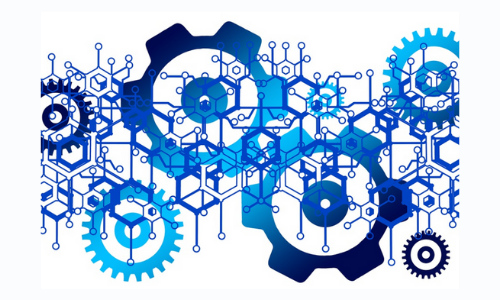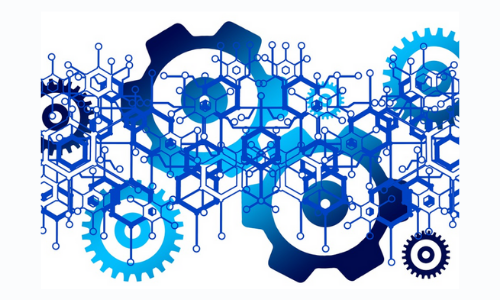


Image Source: Pixabay
Third-Generation Blockchains Will Pick Up the Defi Slack Left by Ethereum
With the ETH 2.0 upgrade still months, if not years, from a full launch, third-generation blockchain protocols are quickly racing up to dethrone Ethereum as the “go-to” hub for dapps and defi.
Although many people may only be discovering it recently, blockchain technology has been around long enough to have moved on from first to second, and now third-generation protocols.
The first-gen blockchain started with Bitcoin, a proposed alternative to the hegemony of centralized financial services. It laid the foundation for a decentralized financial ecosystem, but the Bitcoin network offered limited functionalities, required immense computational power to operate, and suffered from a severe lack of interoperability.
This led to the emergence of Ethereum in 2015, marking the dawn of the second generation of blockchain protocols. As Vitalik Buterin introduced the smart contract functionality on the blockchain, it sparked a paradigm shift that enabled cryptocurrencies to transition from financial tools to serve a more practical purpose. Read More
Ethereum Fee Misery Continues - Why Not Use The Layer 1 Competition?
The days when you could make an Ethereum transaction for less than $30 seem to have ended months ago. At high usage times, users of the blockchain can pay well in excess of $100. With competitors such as Solana, Avalanche and Fantom, providing massively quicker transactions and at a miniscule percentage of the cost, why would anyone actually choose to use the Ethereum blockchain?
According to Messari, the average cost for an ethereum transaction was around $47.35 as of 16 November. Partly in jest, Ryan Selkis, the CEO of Messari, was quoted as saying:
“It doesn’t matter if Ethereum is a security anymore because the only people who can afford to use it are accredited anyway.” Read More
SubQuery And The Graph Are Jockeying To Become The Google Of Web3
For Web3 blockchain indexing solutions, there have only been a few who have created successful innovations that can provide searchable blockchain data, do so quickly, and do so in a way that will eventually be decentralized.
These platforms are The Graph and SubQuery. While their goals are similar—provide easy access to blockchain information—their approaches are different, as are their primary launch ecosystems.
The Graph launched its mainnet for Ethereum in late 2020, and works by teaming indexers, consumers, and curators (playing minor roles are delegators, fishermen, and arbitrators). Indexers stake GRT and run the nodes that collect and index information, processing chunks of the ecosystem in the form of “graphs” and smaller “subgraphs.” Consumers query the data and pay to quickly and easily retrieve the data. Curators are incentivized to look for new subgraphs that may have demand, then stake tokens as a way to mark opportunities for indexers. Curators are rewarded based on how much their marked subgraphs are queried. Read More
Twitter, Discord to support Solana NFT gallery ‘embed’ with Audius Web 3.0
New “embedded” functionality aims to improve fan engagement for musicians through NFT adoption and Web 3.0 integrations.
California-based music streaming platform Audius released a new function that allows artists and fans to embed nonfungible tokens (NFT) on various blogs and social media platforms such as Twitter and Discord.
The “embedded” functionality aims to improve fan engagement for musicians through NFT adoption and Web 3.0 integrations. To enable the feature, artists need to connect their Audius accounts with Phantom wallet, a crypto wallet centered around the Solana ecosystem. Aiming to increase the discoverability of Solana NFTs, the company stated:
“NFT holders can embed their collectibles from the two biggest blockchains on Twitter timelines, personal blogs, and websites. Thanks to this new feature, will further push collectibles into the mainstream.” Read More

Elrond has combined the scarcity of Bitcoin, the programmability of Ethereum, and the speed of next-generation cryptos, like Solana, to create a cryptocurrency network unlike any other. Elrond is a platform built for internet-scale and capable of processing thousands of transactions per second at $0.001 per transaction, and able to scale to hundreds of thousands with demand.
Elrond’s distinction is being a project with a soul. One that has united forces of an incredibly vibrant community of 190,000 people, spanning 18 languages and in almost 30 countries. Elrond aims to create the backbone for high bandwidth, transparent financial system, and extending universal access to anyone, anywhere.
Elrond’s egold (EGLD) native token has exploded in value over the last year and seems to be poised for more gains. The Blockchain project has been considered under the radar and received very little crypto media exposure until now. Read More
CVI Platform Migrating From USDT To USDC, Here’s Why
According to the team behind CVI, switching to USDC brings an enhanced AMM product (automated market makers), which would protect liquidity providers without taking away from the traders’ experience. It also brings the facility of margin trading inside the new USDC pools, available on both Ethereum and Polygon, and finally the benefit of composability with the upcoming volatility tokens.
Users of the CVI platform can stake their tokens for rewards, invest in the liquidity pools in exchange for GOVI rewards and earn a share of transaction fees platform-wide in exchange for holding tokens, while retaining governance rights. Read More
Palau partners with Ripple on climate-friendly national digital currency
The partnership will help Palau be climate-friendly while enhancing its cross-border payments and digital currency technologies.
Ripple, the digital payment network, has partnered with the Republic of Palau to help the Pacific island nation develop its own digital currency.
The initial focus of the partnership will see the development of a United States dollar-backed digital currency to help facilitate cross-border payments for the nation. The collaboration “could see the implementation of the world’s first government-backed national stablecoin in the first half of 2022,” according to Ripple’s announcement.
Ripple suggested the national digital currency may not necessarily be just another central bank digital currency (CBDC):
“Ripple would provide Palau with technical, business, design and policy support. Meanwhile, exploring a USD-backed stablecoin and associated use cases —such as a corporate registry— on the XRP Ledger could provide a viable alternative to central bank digital currencies (CBDCs) for countries like Palau.” Read More
Bringing The Global Agricultural Economy And DeFi Together, Lydium ICO 2nd Phase Sales Have Started
Lydium, which aims to support the development of the agricultural sector and economic growth in the sector by developing solutions for the financial problems of agricultural producers and agricultural workers, aims to bring producers and investors together on the same platform, unlike traditional financial systems.
Lydium financial network aims to solve the financial problems experienced by producers and workers by integrating the benefits and conveniences of decentralized finance ecosystem with double-layered blockchain distribution technology into the agricultural sector, and in this direction, to enable institutional and individual investors to participate in the global agricultural economy with high-income opportunities. Read More
How to enhance DeFi security
Decentralized finance is exploding. Its security is not. Here’s how to prevent millions more lost in DeFi.
Creating a cryptocurrency from scratch isn’t easy. It requires extensive knowledge of various programming languages and knowledge of blockchain use cases, among other things. Instead of going through that effort, those newer to the crypto space wanting to build their own project tend toward tokens.
Tokens are a crypto asset that exists within an ecosystem, like a project built on Ethereum. A token may be compatible with all Ethereum-based assets sharing the same token standard but wouldn’t be compatible with cross-chain cryptocurrencies.
Essentially, tokens enable one to build their blockchain-based business or idea without the massive effort required to build a cryptocurrency from scratch. However, creating it comes with its own set of problems such as legality, fees, and smart contract security. Read More
Disclaimer: These articles are provided for informational purposes only. They are not offered or intended to be used as legal, tax, investment, financial, or any other advice.
